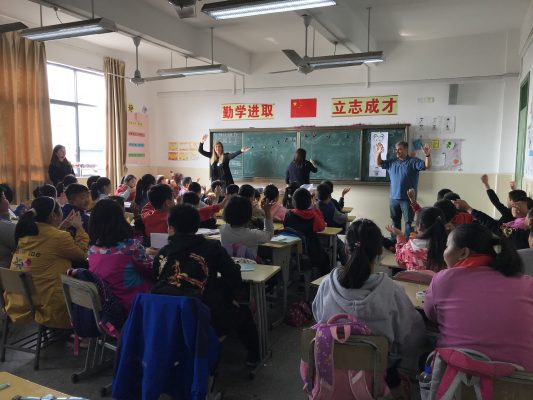
In EFL classes, modeling is often used to help students notice and imitate language patterns, or to show them how to do an activity. This way, teachers can easily get the meaning across without using difficult English or the students’ mother tongue. Here are some examples of how to use this magical technique.
Scenario #1: After teaching the new words, T1 says to the class, “Now, what you need to do is to match the cards and see if the pictures and the words are the same.”
Problem: Students don’t understand the instructions.
Solution:
- Without saying anything to the class, T1 holds up a picture card and word card.
- T1 mimes to match the two cards and asks the class, “Yes or no?”
- T1 uses different pictures and word cards to test students’ comprehension, modeling correct and incorrect matches
- T1 starts to call on students to match by themselves.
Scenario #2: Teacher points at a dialogue and says, “I’ll ask this question and you will give me this answer.”
Problem: Students don’t know what ‘question’ ‘or ‘answer’ mean.
Solution:
- T1 writes down ‘A:’ and ‘B:’ before each line.
For example,
A: How old are you?
B: I’m 8.
- T1 points at ‘A’ and ‘B’. T1 says to T2, “I’m A. You are B.”
- T1 and T2 demonstrate the dialogue.
- T1 calls on a student and says, “I’m A. You are B.” T1 and student try the dialogue. Several students can be called upon to practice.
- T1 pairs students up, then assigns ‘A’ and ‘B’ to each student to get them to try the dialogue.
Scenario #3: Teacher asks class, “Who can give me some verbs that go with ‘can’?”
Problem: Teacher is using grammar words that students don’t know.
Solution:
- T1 boards ‘I can ___.’
- T1 thinks of an activity to complete the sentence.
- T2 does the same.
- T1 asks a student to try it. T1 can use a picture card to give a hint if it’s difficult for the student.
- T1 asks more students to make up a sentence.
Scenario #4: T1 tells class, “Now we will introduce some class rule words to you. When I tell you to stand up, you have to stand up.”
Problem: Teacher is explaining instead of showing.
Solution:
- T1 holds up the picture card for ‘Stand up’ so all students can see clearly.
- T1 says to T2: “Stand up” and T2 does it accordingly.
- T1 and T2 switch roles and do it again.
- T1 turns to one student, and says “Stand up.” If the student doesn’t do it, T2 joins in and does it together with the student.
- T1 turns to whole class with the picture card and gives the instruction to the whole class. T2 again joins in if the students don’t do it. Repeat until students get the hang of it.
Have a try in your next class and see how the magic happens!
